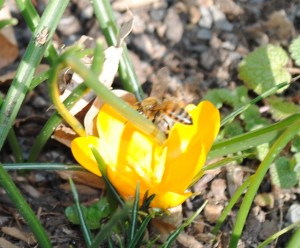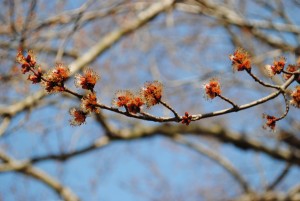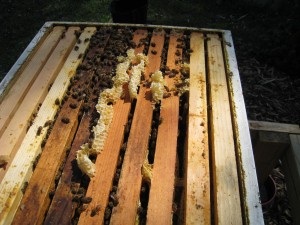Walking Drones and New Lessons
Wow, what a Spring in Richmond, Virginia! It is true that this is only my third Spring as a beekeeper, but I have been a gardener and son of a farmer for over 4 decades (which is my whole life…) This Spring is unusual, but it is really working out well for the bees (so far.) The forecast continues to be fairly mild and the only big risk at this point would be an extended cold period (by extended, I would say a solid week of temperatures not rising above 40.) Even a week of that would not necessarily be devastating. Two weeks would probably set all of my hives back though. I am paranoid by nature, but my experience with gardening tells me that such an occurrence is not realistic at this point. So, time to really get into managing my bees!
I’ve been really under the weather the last few days, but managed to get out and check one of the Varina hives this afternoon. My main goal was to grab a few frames of honey from one of my stronger hives and drop them in my winter Nuc’s. Since this is my first year with Winter Nuc’s, I continue to be a tad paranoid about them (I simply do not know what to expect.) So, I walked out to open the Larry hive to grab a few frames of honey off of them.
As a backdrop, Larry ended the season with a Deep, a Shallow and then a Medium (bottom-to-top). They were one of my reserve hives – a place to grab honey if I needed it somewhere. They also have proven to be frugal and early risers, two traits that I am really starting to like. They do not seem to eat a lot of honey over the Winter and they get to work at about 41 degrees – a good 8 to 9 degrees cooler then my other Varina hives. I have never medicated or even put powdered sugar on them and they seem to be thriving. I want to get some offspring off this hive. I may even raise queens from it.
At any rate, back to the point (I can go on endlessly about ole Larry…) Last weekend, I checked Larry and found 5 frames of pretty solid brood. Not wall to wall (a thin edge of honey/pollen along the edge), but pretty daggone good. They say a hive makes up its mind to swarm a month in advance and I am pretty sure that Larry’s mind is made up. This excites me, as I look forward to the challenge of preventing the swarm while harvesting some swarm cells for some Nucs (of course, a month from now I may be singing a different story.)
So, as fate would have it, I had pulled each frame of the top Medium and found nothing but full honey. I skipped the shallow super (big mistake here) and went to the deep, finding tons of brood and a whole lot of capped drone cells. I wanted to get that Super off of them (why that super was in that spot is another story and another lesson for another day), so I swapped the shallow and the medium, moving the shallow from the middle to the top. Now, it was easy to get at and the bees should move up into the Medium.
Ha! Those bees had already moved into the daggone shallow, as I discovered when I peeled off 4 frames to give to my Winter nucs. Basically, I did the HUGE no-no : I separated the brood nest. It is only by the grace of god that the weather has been favorable, as the bees have had to cover brood in two supers, separated by a medium super! I may have inadvertantly messed up the swarm urge, which would be a shame. Tomorrow, when I hope to feel a little better, I will try to rectify my mistake and get them back together.
But, the one big bonus that I found was walking drones! On the two little shallow frames that I pulled with brood, both had a few drones on them, walking around! That’s huge news for my Nuc experiments. I am currently going with the rule of thumb (you’ll get differing opinions on this, as with everything) that it takes 14 days from hatching for a drone to become a romeo. My other rule of thumb is that it takes 20 days for a Nuc with eggs to send forth a good queen who is looking for a romeo. Basically, I could start a Nuc today and she would have some drones out there to mate her!
So, one of my goals for the season begins a new phase this weekend, as I will start two new Nucs as part of my experiment. It only seems logical to me that waiting another week or two will really give all bees a chance to get a bunch of drones out there (and thus increase the odds of getting a good mating), but I want to experiment. I will start a couple of Nucs each weekend into April and watch how they do. Let the experiments begin!



